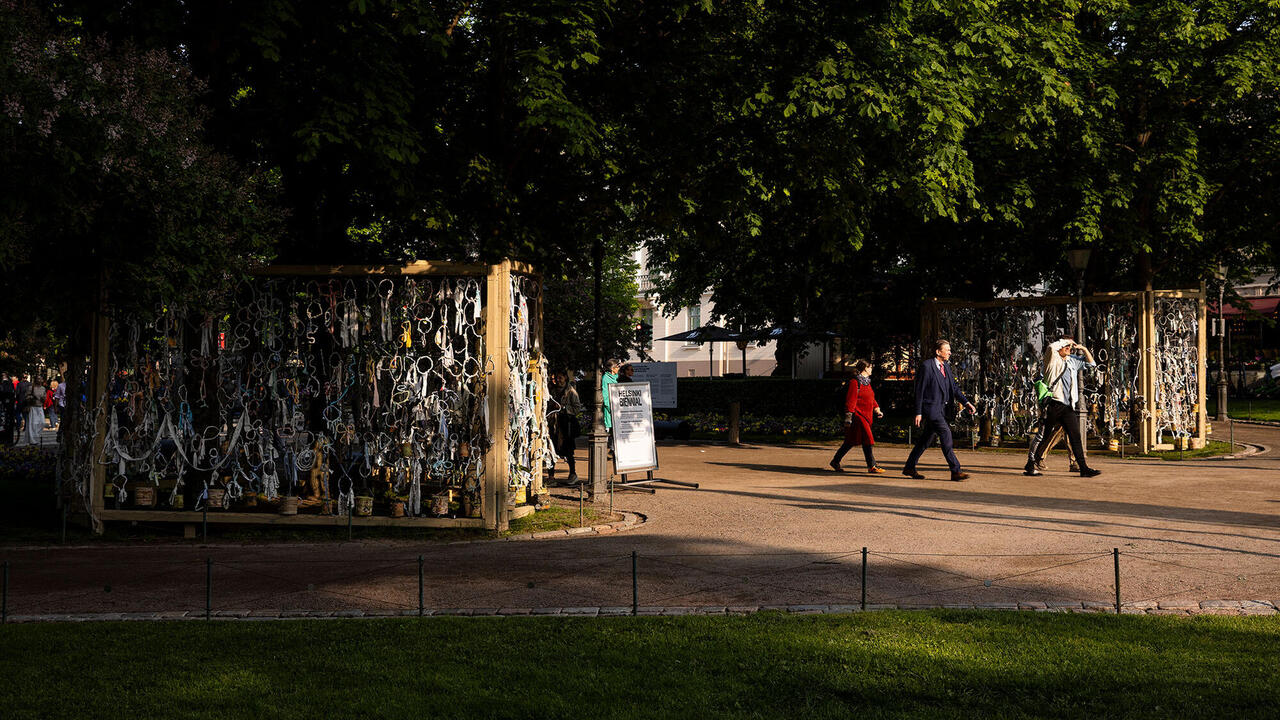This is Not a Love Song
Looking back at the work of the late Ettore Sottsass
Looking back at the work of the late Ettore Sottsass

Ettore Sottsass thought that a retrospective was akin to death – ‘a coffin’ was what he called it. And now the Austrian-born Italian designer is dead, this is not a retrospective (or obituary) summing up his career. You will not read here about his childhood (Innsbruck and Turin), his architecture, his father (another architect), his golf resort in China, or even his design for a mainframe computer in the late-1950s (it won awards).
Instead, we could start with Bob Dylan and ‘Stuck Inside of Mobile (With the Memphis Blues Again)’ from Blonde on Blonde (1966). It seemed providential when, in 1980, Sottsass was listening to the record and it began to skip on the ‘Memphis’ refrain; the name for his new collective was born. ‘Memphis’ summed it all up: American-ness and Elvis and irony.
Or else we could begin ten years earlier in 1969 with the designer’s Valentine typewriter, because I can accurately say: I love Sottsass and his work’s beautiful ugliness. Created for Olivetti, the lipstick-red typewriter’s bright orange spools made typing sexy for the first time. The designer later dismissed it as, ‘too obvious, like a girl wearing a very short skirt and too much make-up.’ But that was just what the Valentine was about, as Sottsass said, ‘the sort of thing to keep lonely poets company on Sundays in the country.’ The typewriter perfectly sums up the late-60s, and is also one of the first designs that hinted at what technology could be, a hopefulness that only recently returned with Jonathan Ive’s tenure at Apple.
Memphis created furniture that questioned everything, including our notions of beauty
All of this is why I love (and hate) Memphis. At a time when design is largely banal and consumer-driven, Sottsass and his compatriots seem positively provocative. They created furniture that questioned everything, including our notions of beauty. The collective’s work was postmodern, bold and garish, but it also propositioned us. Memphis was as much a pop song as a design movement. Their shockingly bold colours – the squiggly prints, the snakeskin laminates – wouldn’t have looked out of place on a Talking Heads or PiL cover. Their cabinets climb upwards, level-upon-level, with the cartoonish quality of Keith Haring – an anthropomorphism that poked fun at design. We had, in a sense, come to the end of design. WWII birthed new materials and new ways of living that required new objects, but by 1980 much of that was exhausted. Architecture had been a machine, Modernism had formed and functioned, and now it was time for fun. Memphis asked what furniture now represented. And while Sottsass wasn’t talking theory or multi-syllabic words, the group posed some of the same questions the artworld was pondering at the time.
Memphis was also the perfect accompaniment to the excesses of the 80s: the big money and shoulder pads, even the cocaine. Sottsass himself said in the Chicago Tribune, ‘Memphis is like a very strong drug. You cannot take too much. I don’t think anyone should put only Memphis around: it’s like eating only cake.’ At this time it seemed to make sense to create a boxing ring/conversation pit, as one Memphis member did. Another member, Shiro Kuramata, created one of the most sublime objects. His Miss Blanche chair – made of lucite with embedded roses – appears as evanescent as a kiss.
Even now, when design is ruled by minimalism and easily-consumed neutrals, designers like Tom Dixon, Thomas Heatherwick and Jony Ive still carry the torch for Sottsass. Dixon’s chairs are given away in Trafalgar Square in a grand, punk gesture. His Fresh Fat Plastic mobile machine is closer to something by Roxy Paine piece than to product design, with lab-coated assistants overseeing the production of extruded chairs, bowls and tables. Though hardly beautiful, Dixon’s objects question what design is about and for whom. Heatherwick’s mannerist materialism suggests Kuramata’s chair; her handbag for Longchamps is made entirely from a single zip. The bag suggests that it might disappear completely if unzipped, questioning the transience of consumerism.
Last year Tom Dyckhoff reported in the Times that Icon Magazine asked Sottsass to create a cover. His response: ‘You don’t save your soul just painting everything white.’ Truer words couldn’t be said. But now who will save design from its own good taste? In our days of hedge funds, I say bring back the questions and provocations of Memphis and Sottsass.















